
Hypoxic and anoxic regions in the Baltic Sea, 2000
The content of this webpage is part of the Marine Science Report No 100 2016 and should be cited as:
Susanne Feistel, Rainer Feistel, Dietwart Nehring, Wolfgang Matthäus, Günther Nausch, Michael Naumann: Hypoxic and anoxic regions in the Baltic Sea, 1969 - 2015. Meereswiss. Ber., Warnemünde, 100 (2016) doi: 10.12754/msr-2016-0100
All version information and information on further technical development are available via the website https://www.io-warnemuende.de/msr-2016-0100.html

This work is licensed under a Creative Commons Attribution-NonCommercial 4.0 International License.
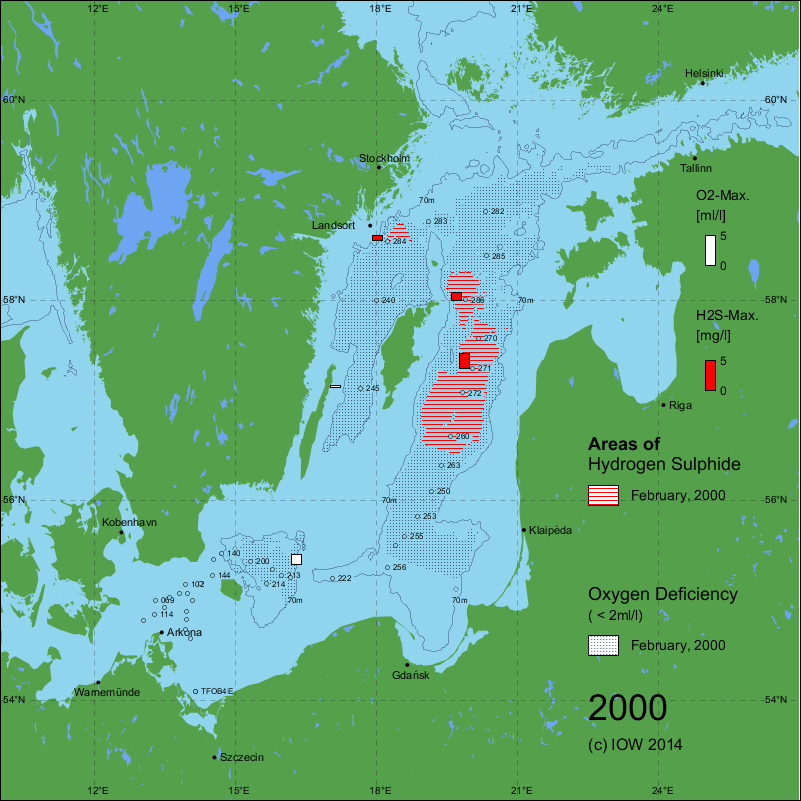
Jan/Feb, 2000: download SVG (computed 2016)
|
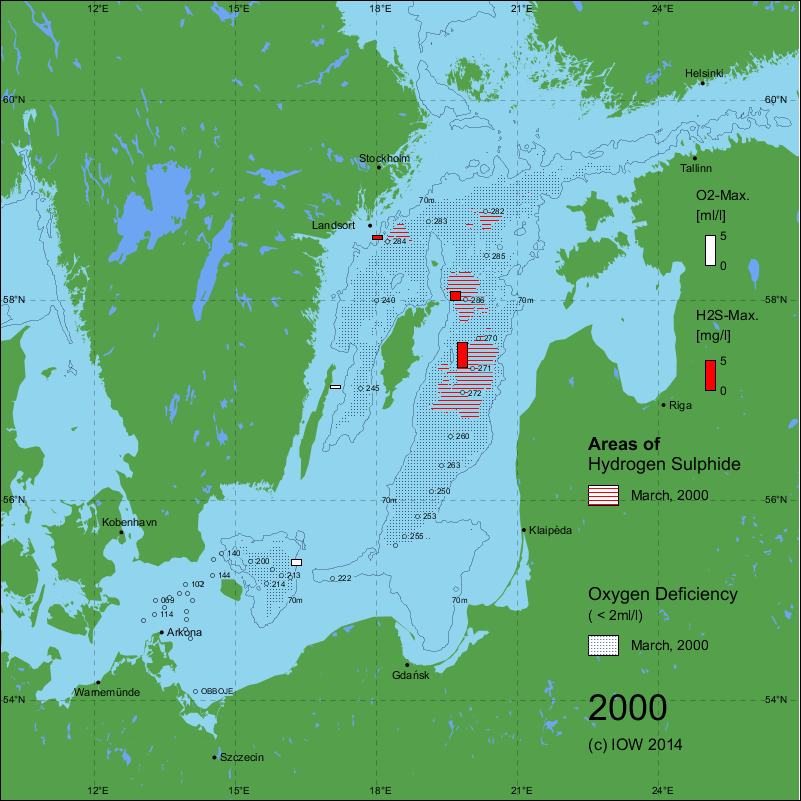
Mar/Apr, 2000: download SVG (computed 2016)
|
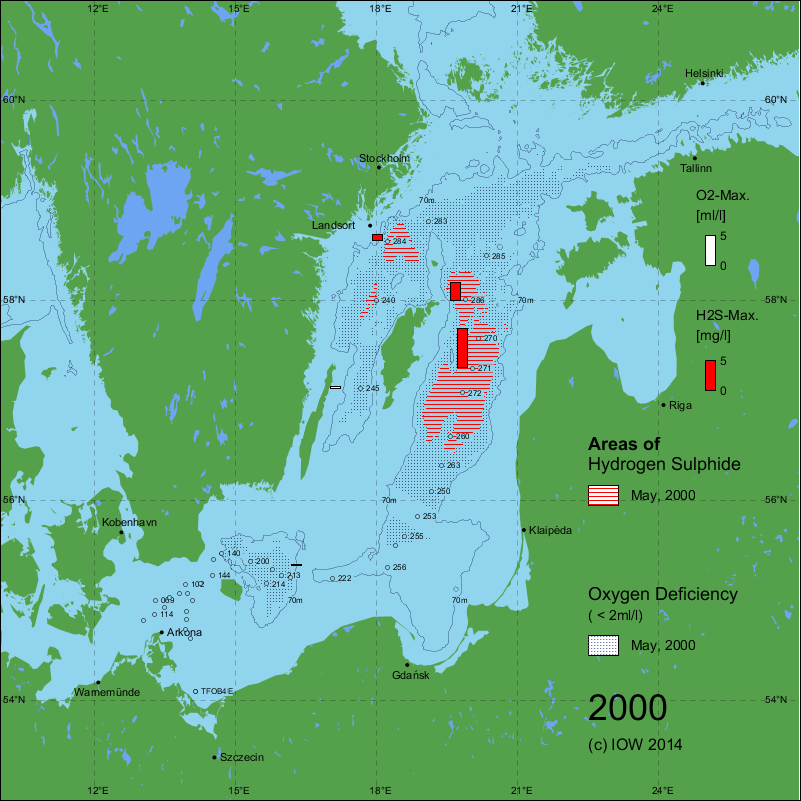
Apr/May, 2000: download SVG (computed 2016)
|
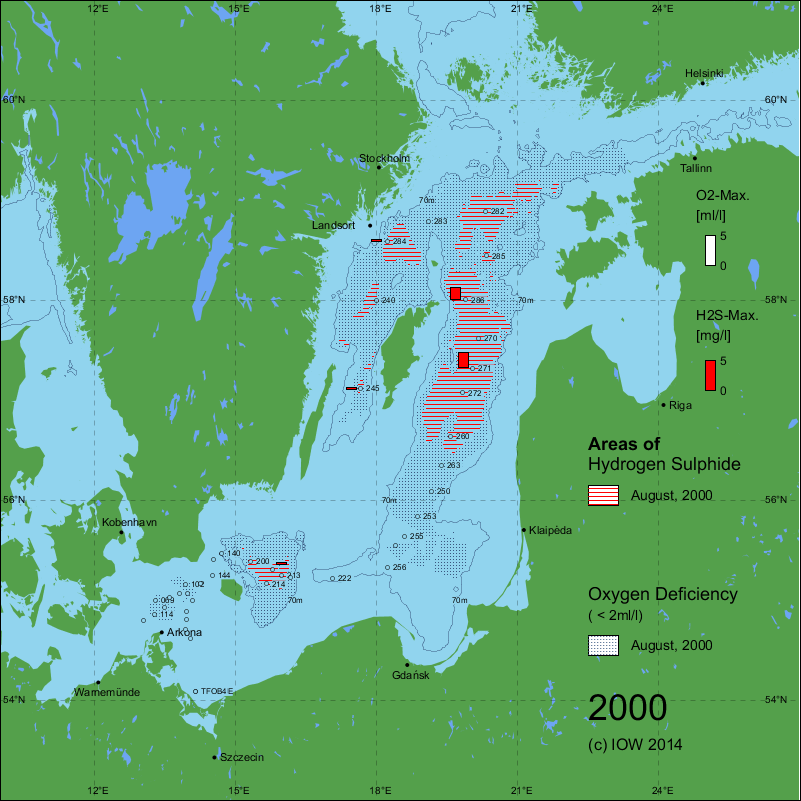
Jul/Aug, 2000: download SVG (computed 2016)
|
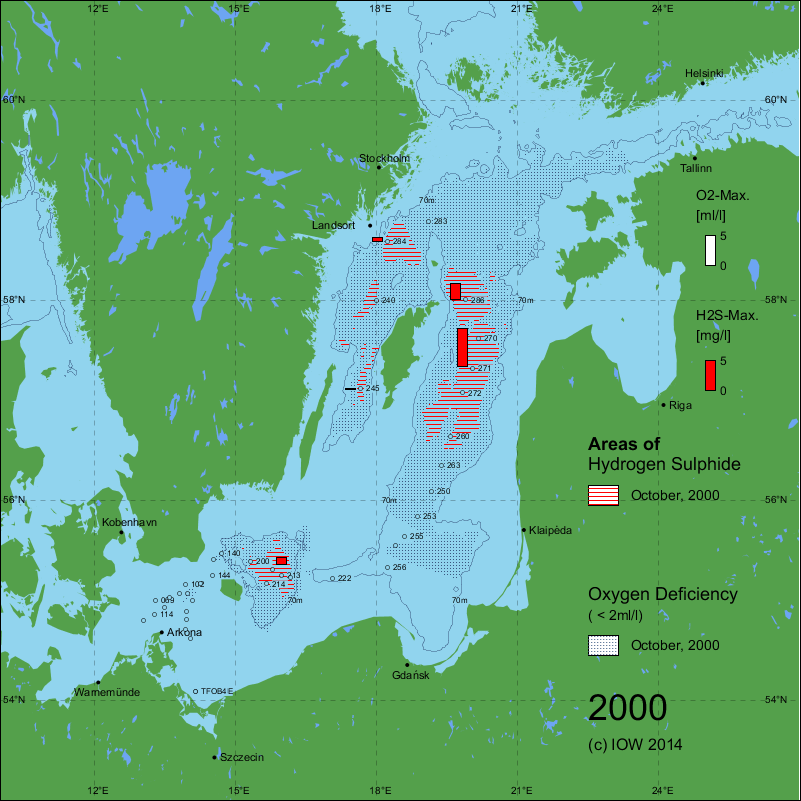
Oct/Nov, 2000: download SVG (computed 2016)
|
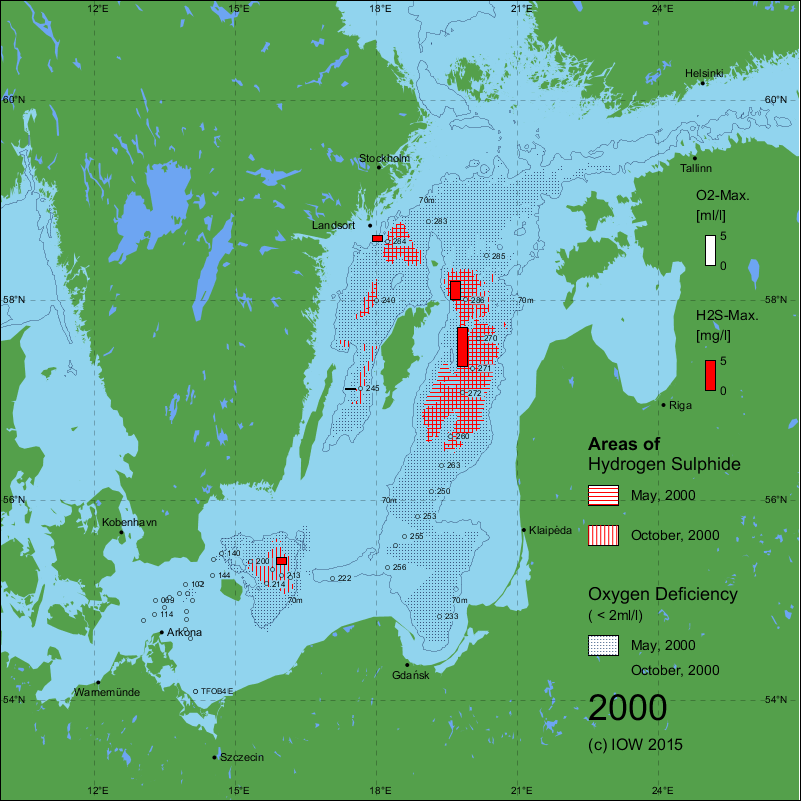
Apr/May & Oct/Nov, 2000: download SVG (computed 2016)
|
| Weak inflows in December 1999 and February 2000 led to the renewal of the Bornholm Basin deep water in spring. From August onwards, hydrogen sulphide was measured in that basin up to mid-November. In the eastern Gotland Basin, anoxic water covered the layer between bottom and 120 – 125 m all the year round. In the deep water of the western Gotland Basin, oxygen depletion has continued since 1993. Since August 1999, hydrogen sulphide has been partly present in the western basin deep water (MATTHÄUS et al., 2001b, 2001c). | |
References:
- MATTHÄUS, W., NAUSCH, G., LASS, H. U., NAGEL, K., SIEGEL, H., 2001b: Hydrographisch-chemische
Zustandseinschätzung der Ostsee 2000. – Meereswiss. Ber., Warnemünde, 45, 27-88, doi: 10.12754/msr-2001-0045 - MATTHÄUS, W., NAUSCH, G., LASS, H. U., NAGEL, K., SIEGEL, H., 2001c: The Baltic Sea in 2000 –
Low inflow activity caused an increase in stagnation of the central Baltic deep water. – Meereswiss. Ber., Warnemünde, 45, 89-97, doi: 10.12754/msr-2001-0045